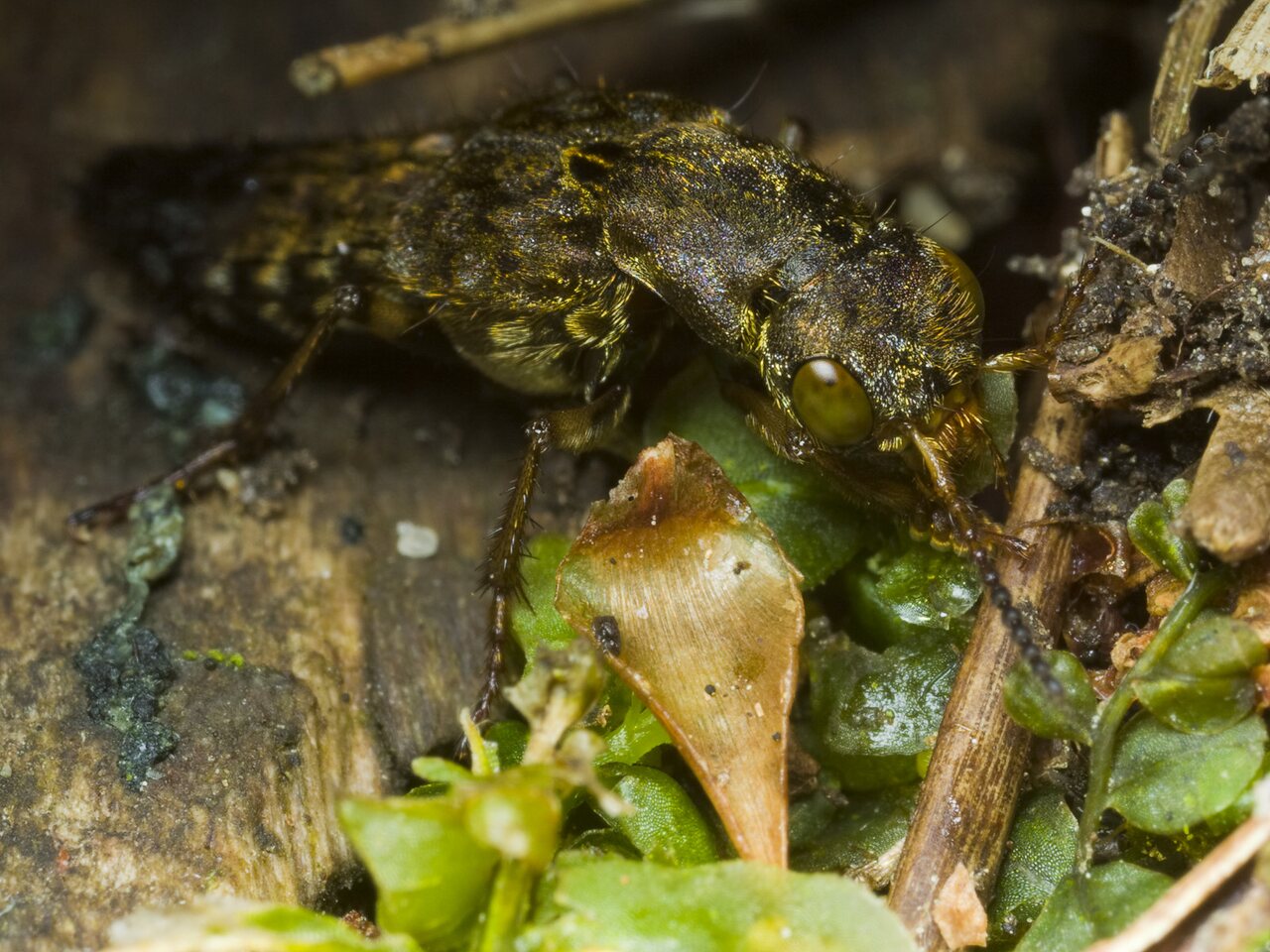
Ontholestes tessellatus · trumpasparnis
- chequered rove beetle
- Gewürfelter Raubkäfer
ukbeetles.co.uk/ontholestes-spp
This species is widespread across the Palaearctic region, occurring throughout Europe to the far north and east into China and eastern Siberia. Adults are present year-round and are active over a long season from early spring, they probably overwinter in the soil. They are predatory and occur in decaying organic matter rich in fly larvae but are less frequent at dung. Adults generally occur among compost or carrion and may be common among straw and dung mixtures stored as fertilizer through the warmer months, they fly quickly and powerfully and are quick to arrive at new host material, they may be found in any fairly dry habitat from woodland to grassland and occur among suitable material on coastal dunes etc. The life cycle is not well understood but adult numbers peak during May and again during August and September, suggesting a univoltine cycle: breeding in the spring with larvae developing through the summer and the resulting adults overwintering. They are fast moving and hide or take flight very quickly when disturbed.
15-22mm. Distinguished from O. murinus by the shape of the pronotum and the pale legs, from our other staphs by the dorsal pubescence and sharp anterior pronotal angles. Body black with dense variegated brown and grey pubescence which vary in extent but form a symmetrical pattern, the scutellum and basal abdominal tergites usually with sharply-defined dark patches, legs and antennal bases substantially red. Head transverse, with large eyes (though these are proportionally smaller than those of murinus) and rounded temples, surface densely punctured and rugose and mandibles with a large bicuspid internal tooth. Antennomeres 1-5 elongate, 6-10 progressively transverse, terminal segment emarginate across the apex. Pronotum rounded across the base, the posterior angles hardly developed, and broadened to acute and slightly projecting anterior angles, the lateral margin sinuate behind the middle and the surface densely punctured and rugose, usually slightly more strongly so than the head. Scutellum large and triangular, with dense dark pubescence which is often divided by a pale median strip. Elytra quadrate to slightly transverse, with sloping shoulders and distinct posterior angles, lateral margins curved and widest about the middle, surface densely and rugosely punctured. Basal abdominal tergites with well-defined patches of black pubescence, all tergites finely and densely punctured. Legs substantially pale, usually only the femora darkened around the middle. Front and hind tibiae more or less straight, middle tibiae expanded and curved inwards towards the apex. Basal segments of front tarsi strongly dilated in both sexes. Males may be distinguished by their broader head and much larger mandibles.
‥